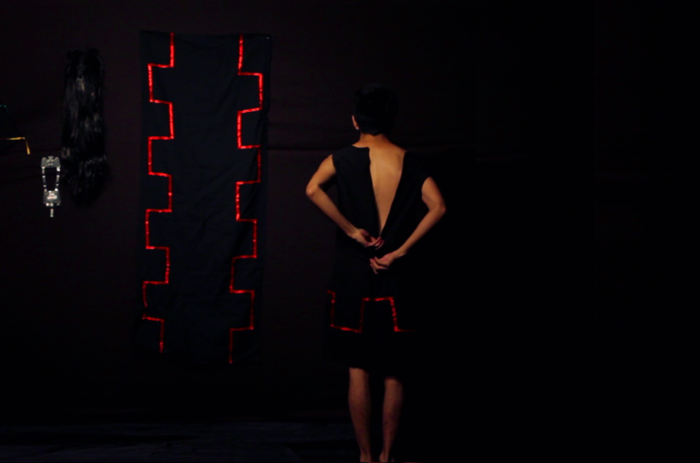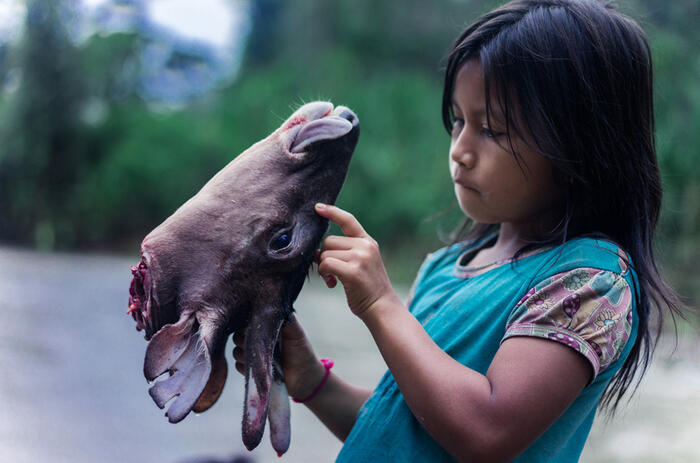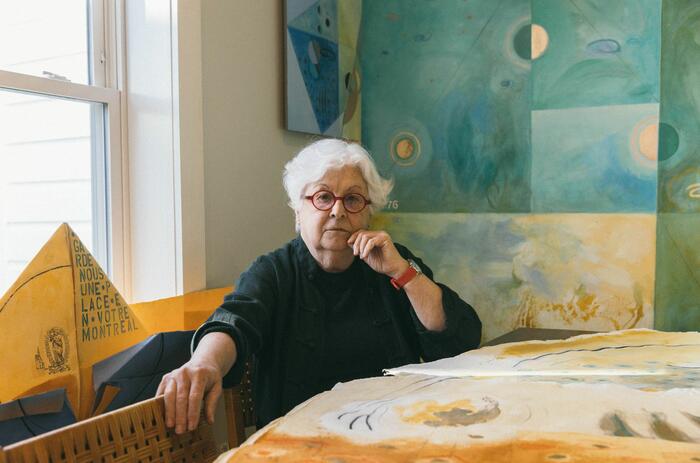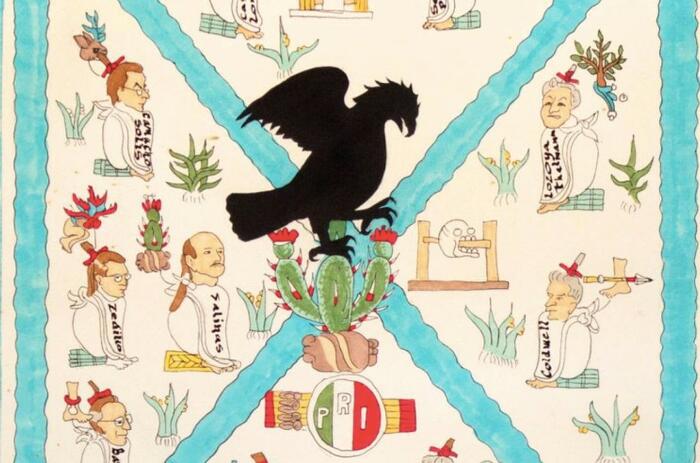PAZ ERRÁZURIZ: THE GREATNESS OF THE MARGIN
Probably anyone who is interested in the visual arts within the Latin American scene will be familiar with the work of the Chilean artist Paz Errázuriz. Her impressive work is characterized, above all, in working, through photography, themes linked to oblivion, marginality and exclusion, showing a particular interest in portraying those people that society, for various reasons, has left aside. This year, Errázuriz took a privileged spot at the 22nd Paiz Perdidos Art Biennial Perdidos. en Medio. Juntos. (Lost. In Between. Together) and she presents during the months of May and June a solo exhibition entitled La grandeza del margen (The Greatness of the Margin). From this exhibition, I find especially notable the Trans Guatemala (2020) and Sepur Zarco (2020) series, two unpublished series where problems of great contingency are evident.
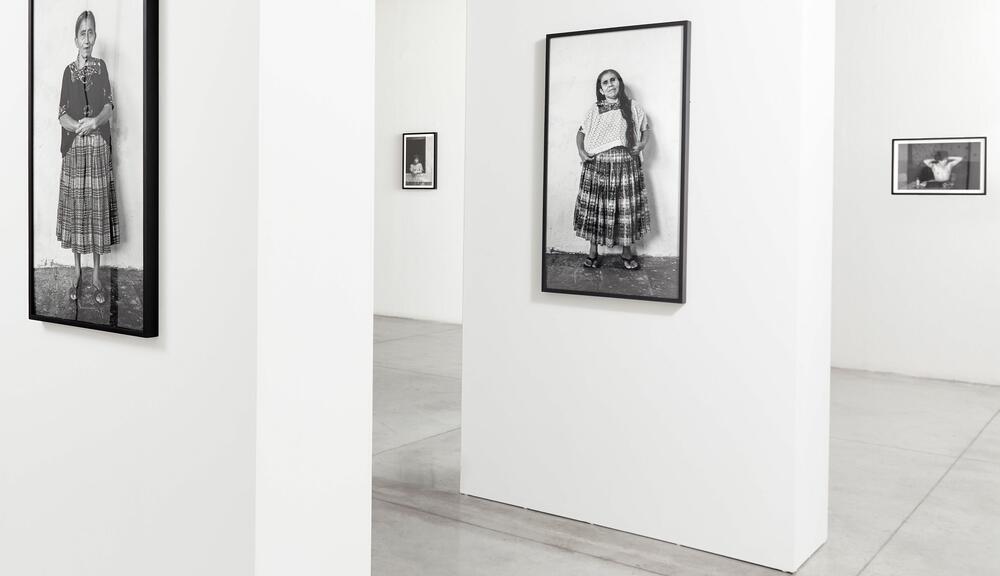
The Sepur Zarco series (2020) shows us portraits made of indigenous women from the Q'eqchi community of El Estor, Guatemala, who during the eighties, in the midst of the Guatemalan civil war, were victims of brutal crimes, such as systematic rapes and domestic slavery by the military. This group of women is known today by the locals as "The grandmothers of Sepur Zarco", and they have managed, more than twenty years later, to make history and set precedents by winning a trial in which former soldiers were convicted of crimes against humanity.
Errázuriz's photographs present these brave women to us: faces of survivors that reflect more than a single emotion; They show us the dignity, strength and overcoming that they have proven to have, as well as over the years, the horrors and fatigue that they carry on their bodies. As is to be expected from a work by Errázuriz, Sepur Zarco introduces the viewer to an intimate and taboo space, one that has remained hidden by a patriarchal system that was slow to do them justice. The black and white photography used by the artist seems to be the perfect way to address these issues, on the one hand, the seriality of this work reinforces the idea of community, a collectivity of women who denounce in unity the injustices to which they have been subjected, and on the other hand, the absence of color in the works frees photography from the trap that is the beautiful coloring of their indigenous costumes, attires full of life that have been used in the construction of the indigenous identity exploited for tourism by the national state. Also, this same absence of color seems to speak to us about something that has already happened, a past that comes to be present with a strong will not to be forgotten again.
Invited to participate in this project by the general curator of the event Alexia Tala, Errázuriz accepted the challenge by understanding the great responsibility that this implies despite never having developed work outside the Chilean borders before. Regarding the artist's motivations and understanding that the focus of the biennial is on the Global South discourses and that its scope is international, we spoke with Errázuriz about how this work resonates with other Latin American concerns. The artist commented that “Although Sepur Zarco is typical of a historical and political problem in Guatemala, abuse, cruelty and barbarism against women are transversal themes in all societies. That is why my work insists on revealing women's stories, as a warning sign, looking and giving space to their realities. This is how I understand that this work transcends the context of the biennial, which is a space for dissemination; and to Guatemala ”.
Something similar is addressed in the series Trans Guatemala, a work that allows us to take a look at a hidden world in plain sight, misrepresented, misunderstood and invisible characters in a society as conservative as that of our region. In this regard, Errázuriz points out that “This matter, which has gained a necessary visibility, presses across all of Latin America. On the one hand, it reflects once again the same discrimination, the same lack of space, the same lack of respect, but on the other, a capacity to form community, to live despite having a lot against, and to make their own history." Here the artist worked hand in hand with unpublished testimonies of the women portrayed, allowing the public to learn first-hand the history of each one of them. We can establish a clear link between this series and La manzana de Adán (1983-1987), a renowned work by Errázuriz where the artist worked for four years photographing transvestite brothels in the cities of Santiago and Talca (the artist usually makes turns and looks for different edges of the same subject; closed and unnoticed spaces). Errázuriz undoubtedly gains the trust of her portrayed, and from this trust a truly intimate photograph is obtained, where it is possible not only to capture the essence of the person, but also to do so without falling into clichés and stereotypes. Thus, her work remains honest, challenging the preconceptions of the collective imagination.
When asking Errázuriz if it is that through photography she intended to give -or return- a certain dignity to those that society marginalizes, rejects and abandons, she replied: “I consider that my work does not return, nor does it deliver, but rather makes visible or articulates something that exists in each community, marginalized by society due to the threat posed by these other forms of life in a colonial and patriarchal structure." And without a doubt, works such as Sepur Zarco and Trans Guatemala really achieve this task, since from the specific, they address the universal: fear, prejudice, abandonment and exclusion, all this reflected in the gaze of someone who, without knowing, we achieved to understand.
The exhibition The Greatness of the Margin updates us with respect to the scale with which we can access contemporary problems today. Global interconnection has allowed the struggles for equality, for the social rights of marginalized people, to be recognized in the same place of debate, whether in the Kaweskar Village, in a Q'eqchi 'community in Guatemala or in India. Socio-cultural differences and geographical distances are now disappearing and concerns that years ago seemed local, today are global and urgencies of the world.



